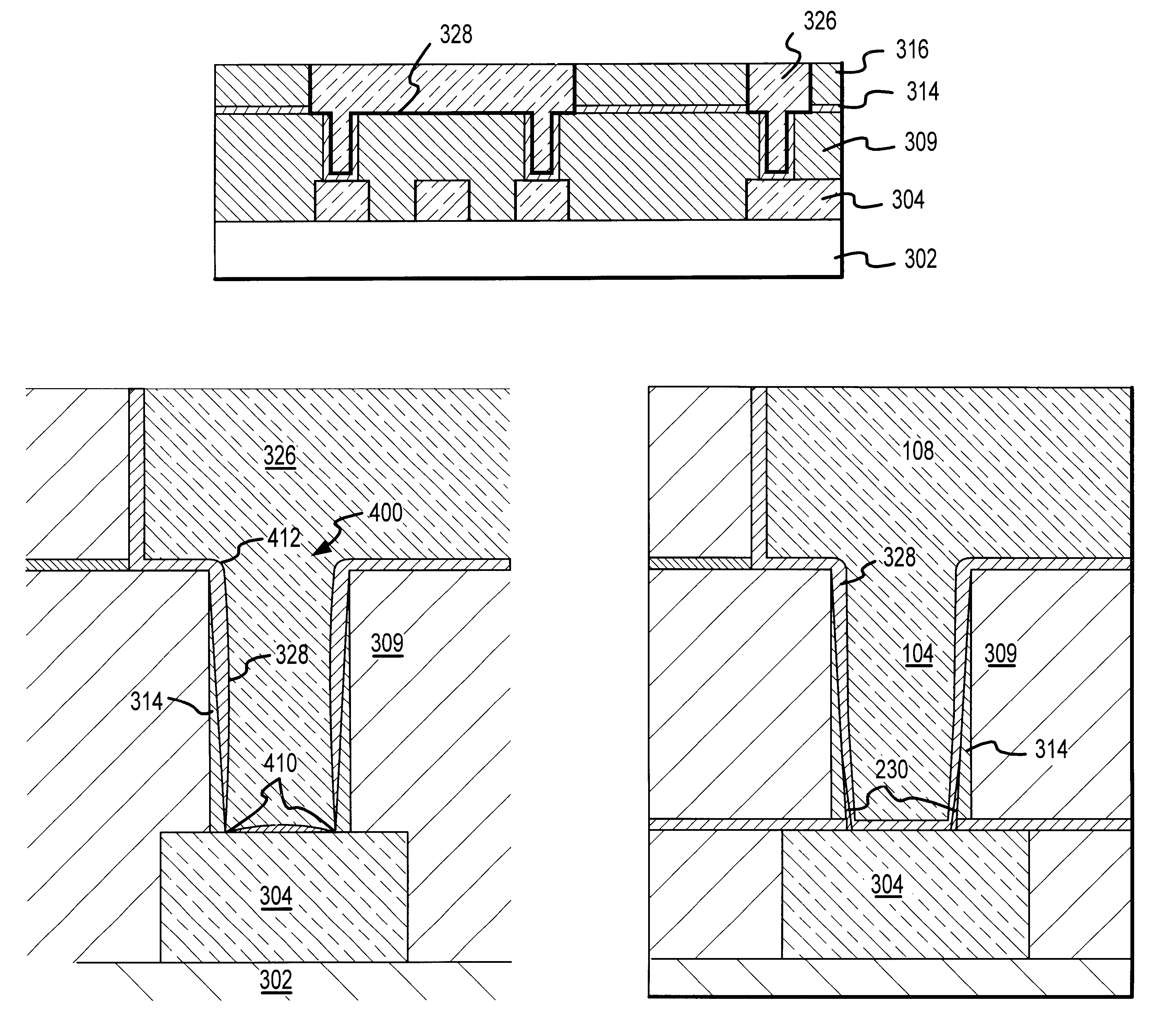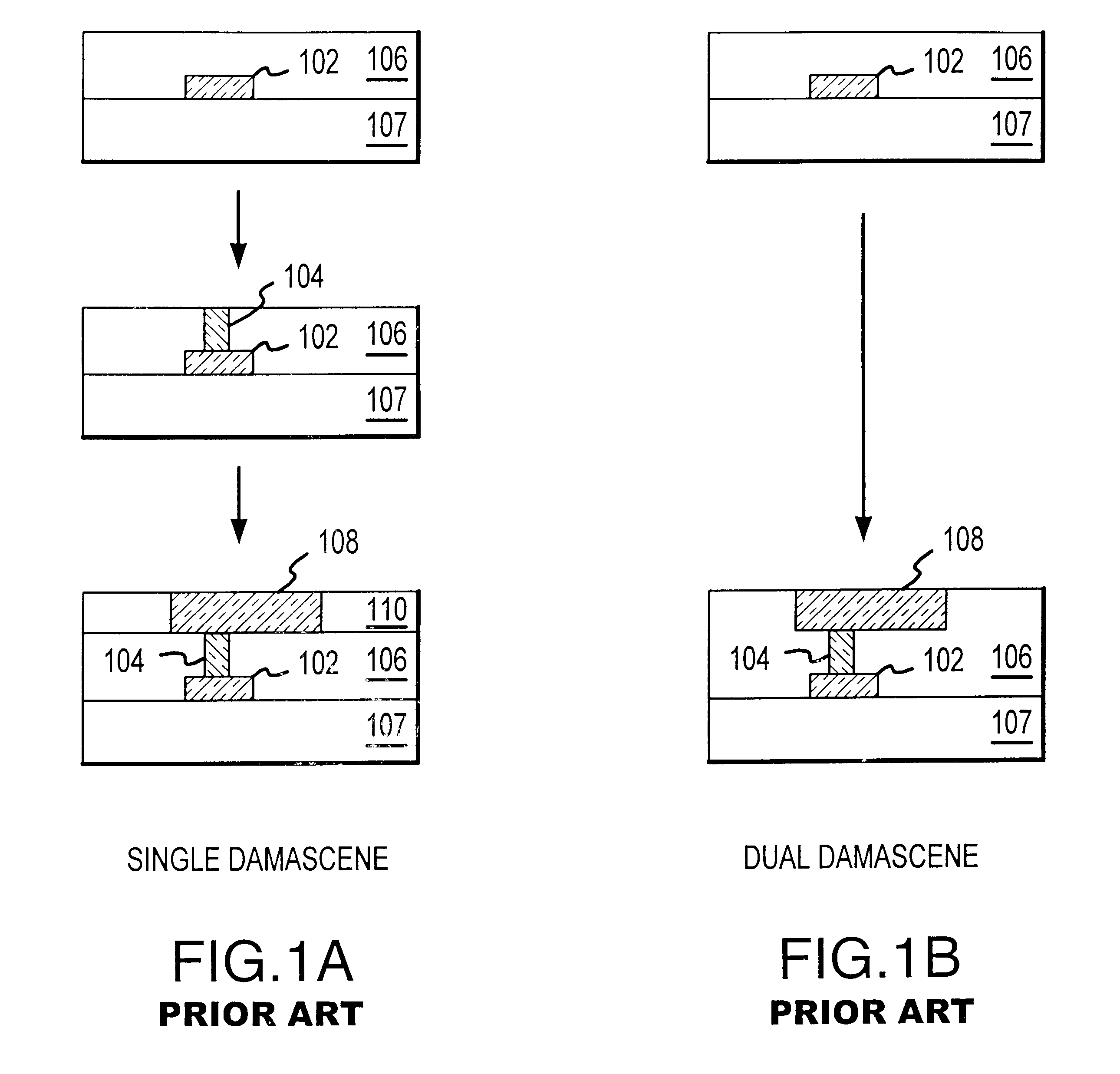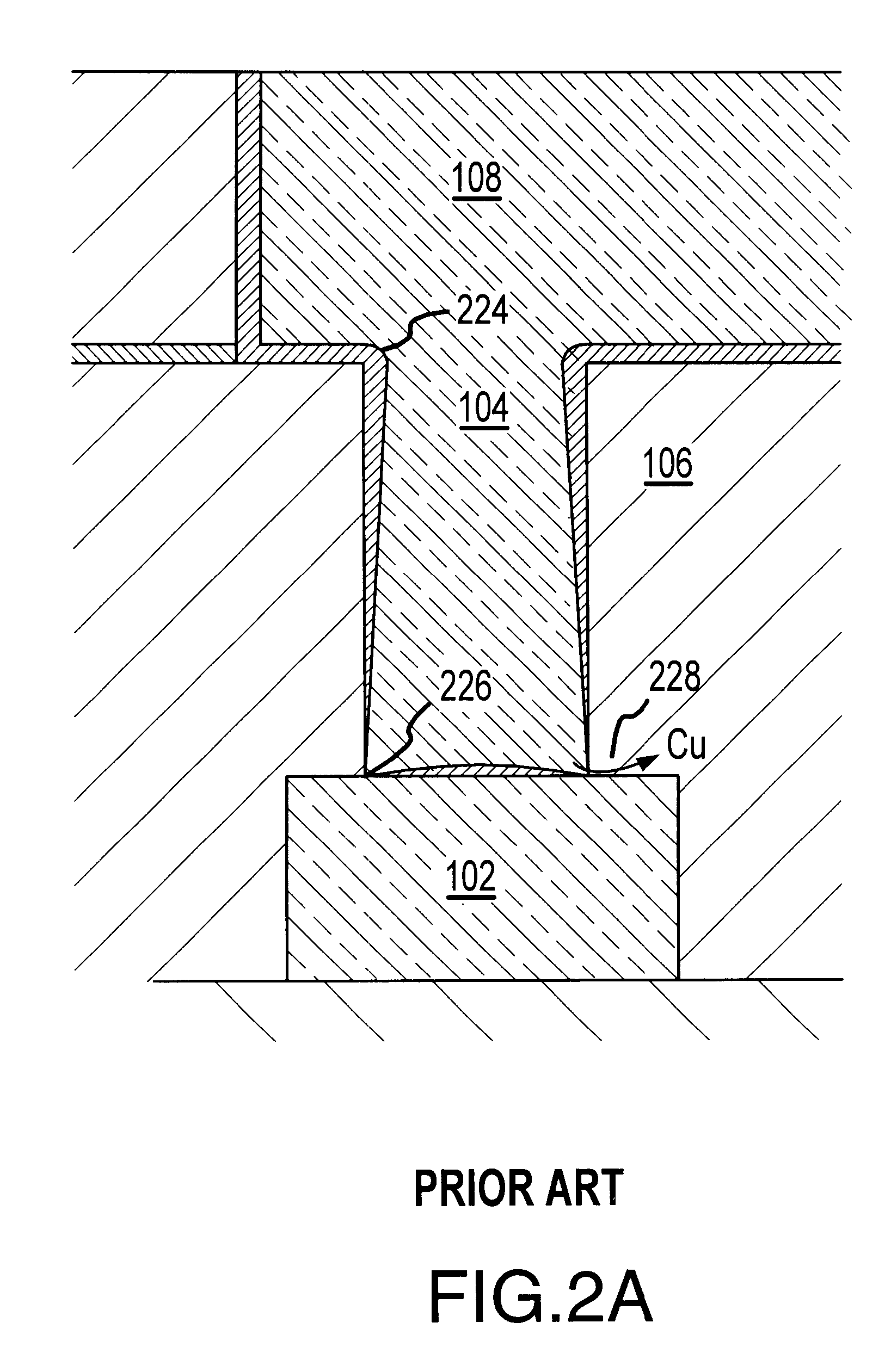Dual-damascene interconnect structures and methods of fabricating same
a technology of interconnect structure and damascene, which is applied in the direction of basic electric elements, electrical equipment, semiconductor devices, etc., can solve the problems of copper migrating or diffused into silicon dioxide, and reducing the permeability of the bond
- Summary
- Abstract
- Description
- Claims
- Application Information
AI Technical Summary
Problems solved by technology
Method used
Image
Examples
Embodiment Construction
An interconnect fabrication process in accordance with various aspects of the present invention provides barrier enhancement at the via sidewall and improved capability to fabricate high aspect ratio dual damascene structures. While the manner in which the present invention addresses limitations of the prior art are discussed in detail below, in general, referring momentarily to FIG. 4, a via structure 400 formed within a dielectric 309 (linking metal pattern 326 and conductor 304), is lined with a barrier dielectric layer 314 (for example, silicon nitride) prior to deposition of metal barrier 328 onto the dual damascene structure. As a result, the effective barrier thickness along the bottom of the via (410) as well as the top of the via (412) is sufficient to eliminate the structure's susceptibility to Cu migration.
Referring now to the flowchart shown in FIG. 5, an exemplary method of practicing the present invention will now be described in conjunction with the cross-sectional di...
PUM
| Property | Measurement | Unit |
|---|---|---|
| feature sizes | aaaaa | aaaaa |
| dielectric constant | aaaaa | aaaaa |
| height | aaaaa | aaaaa |
Abstract
Description
Claims
Application Information
 Login to View More
Login to View More - R&D
- Intellectual Property
- Life Sciences
- Materials
- Tech Scout
- Unparalleled Data Quality
- Higher Quality Content
- 60% Fewer Hallucinations
Browse by: Latest US Patents, China's latest patents, Technical Efficacy Thesaurus, Application Domain, Technology Topic, Popular Technical Reports.
© 2025 PatSnap. All rights reserved.Legal|Privacy policy|Modern Slavery Act Transparency Statement|Sitemap|About US| Contact US: help@patsnap.com



